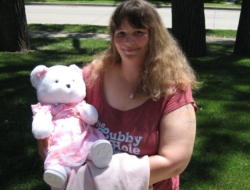Resurrection of the body
USA Today reported Oct. 20 on a disturbing trend in the business of human cremation. Ashes are less and less often being placed in an urn which is to be interred in a grave or entombed in a columbarium, but are instead being incorporated into “sculptures, picture frames, pendants, wind chimes, sundials and even teddy bears.”
“Ashes of a police officer can now be kept close in a .44-caliber Magnum silver-bullet keychain. Those of a biker can be cherished in an urn that looks like a born-to-ride motorcycle gas tank,” the story continues.
The Church has placed great importance on the care of the remains of the deceased. The body is an integral part of who we are as individuals.
A person is not a soul encapsulated in a body, but the body and soul together fully expresses our humanity. Because the body is the temple of the Holy Spirit, human remains are sacred. Christian care of the remains expresses our hope in the resurrection of the body, a core belief that we profess each time we recite the Creed.
Since apostolic times — and in keeping with Jewish tradition — Christians have always buried the dead. Only under extraordinary circumstances — a plague or another catastrophic event — was cremation permitted.
The practice of cremation in modern times can be traced to the last half of the 19th century in Europe, where it was initially promoted as a way to deny the Christian belief in the resurrection of the body. Hygienic and economic reasons were also offered to justify restoring the practice that had been abandoned in the 5th century, as the Christian faith expanded throughout the West.
It is only in the last 50 years that the Church has accepted the possibility of cremation, as long as it is not done with an intention that denies the resurrection of the body. The change came about in response to increasing societal acceptance of the practice mostly for economic reasons.
However, though cremation may no longer be completely prohibited, contrary to what many believe the Church is not neutral toward the practice. Following constant tradition, the Church encourages the faithful to bury the dead.
“The Church earnestly recommends that the pious custom of burial be retained; but it does not forbid cremation, unless this is chosen for reasons which are contrary to Christian teaching,” states the Code of Canon Law.
But even if a body is cremated, the Church still calls for the remains — the “ashes”— to be treated with the same care and reverence as the body of the deceased.
Are the new, fashionable ways of preserving ashes — keeping cremated remains on the mantle, carrying them in pendants or placing them in a teddy bear — in keeping with the dignity and reverence they deserve in a fi nal resting place?
As people are often misinformed about the Church’s teachings on this matter, the upcoming feast of All Souls Nov. 2 provides us an opportunity to share with relatives and friends our belief in the sacredness of the human body and in the resurrection of the dead. It also serves as an opportune moment to express our views on how we want those around us to treat our remains when our time of passing to the Father arrives.



















